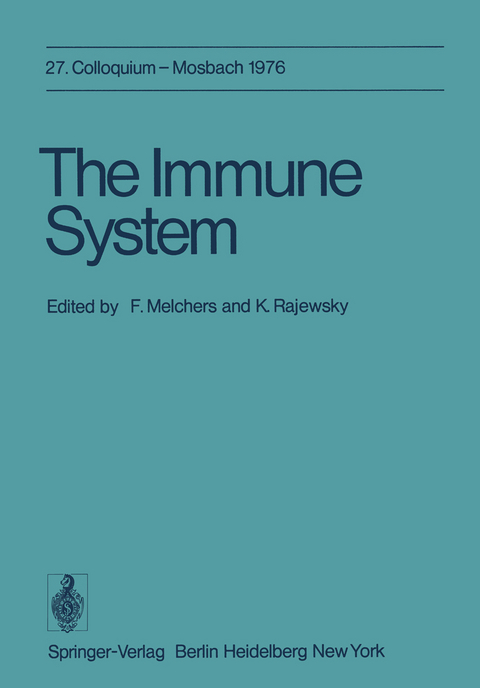
The Immune System
Springer Berlin (Verlag)
978-3-642-81085-5 (ISBN)
Antibody Structure.- The Structural Basis of Antibody Specificity.- Structure and Specificity of Immunoglobulins.- X-Ray Diffraction Analysis of Immunoglobulin Structure.- Recognition and Allostery in the Mechanism of Antibody Action.- Antibody Structural Genes.- Structure and Genetics of Antibodies.- Genetic Control of T and B Cell Receptor Specificity in the Mouse.- Immunoglobulin mRNA and Immunoglobulin Genes.- Differentiation of Immunoglobulin Genes.- Immunocompetent Cells.- Phylogenesis of the Vertebrate Immune System.- Characteristics of B Lymphocytes and Their Mechanism of Activation.- T Lymphocytes.- Tumors of Immunoglobulin-Producing Cells and Thymus-Derived Lymphocytes.- Macrophages.- The Major Histocompatibility Complex and Cellular Recognition.- The Major Histocompatibility Complex and Its Biological Function.- Specificity of Immune Response Control by H-Linked Ir Genes.- The Structure of Products of the Major Histocompatibility Complex in Man.- The Structure and Evolution of Transplantation Antigens.- Chemical Structure and Biological Activities of Murine Histocompatibility Antigens.- Immune Response Region Associated (Ia) Antigens. Some Structural Features.- General Aspects of the Immune System.- The Immune System: A Network of Lymphocyte Interactions.- Clonal Selection and Network Regulation.- Considerations on Immunity and Disease.- Two Immunological Worlds: Antibody Molecules and Lymphoid Cell-Surfaces An Overview of the Mosbach Colloquium.
| Erscheint lt. Verlag | 8.12.2011 |
|---|---|
| Reihe/Serie | Colloquium der Gesellschaft für Biologische Chemie in Mosbach Baden |
| Zusatzinfo | XIV, 302 p. |
| Verlagsort | Berlin |
| Sprache | englisch |
| Maße | 170 x 244 mm |
| Gewicht | 554 g |
| Themenwelt | Naturwissenschaften ► Biologie ► Mikrobiologie / Immunologie |
| Naturwissenschaften ► Biologie ► Zellbiologie | |
| Schlagworte | Antibody • Antigen • immune system • Immunologie • Lymphocytes |
| ISBN-10 | 3-642-81085-3 / 3642810853 |
| ISBN-13 | 978-3-642-81085-5 / 9783642810855 |
| Zustand | Neuware |
| Haben Sie eine Frage zum Produkt? |
aus dem Bereich


